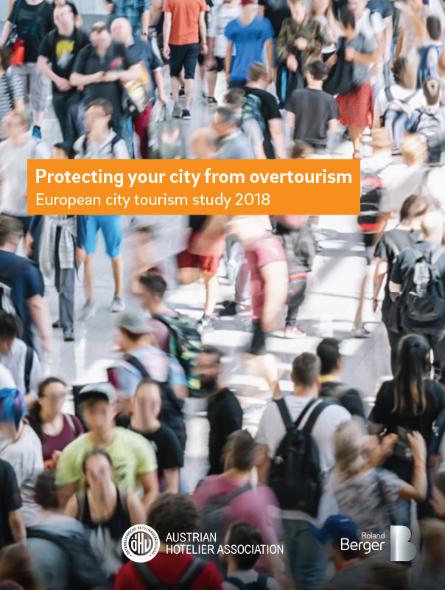''Overtourism'' in Europe's cities: Action required before it's too late
![{[downloads[language].preview]}](https://www.rolandberger.com/publications/publication_image/roland_berger_469_overtourism_cover_download_preview.jpg)
Amsterdam, Barcelona or London – find out which cities are on the brink of being overloaded by tourists. To avoid "overtourism", cities need a sustainable strategy.


A weekend in Amsterdam, Barcelona or London – city breaks are all the rage across Europe these days. The number of overnight stays made by tourists in cities has risen 57 percent since 2008, more than double the rate of growth in people visiting the respective countries in general. This gives cities and their tourism providers an important source of income. But popular destinations like Amsterdam or Barcelona show just what the consequences of ''overtourism'' can be like.
When cities become victims of their own success and are overwhelmed by tourists, the local residents get irritated by noise, traffic congestion and crowded restaurants, the local identity and culture are damaged or adapted to suit tourist tastes, and so on. However, cities can remain attractive places to be and increase the value added by tourism without falling into the ''overtourism'' trap, as demonstrated in the publication "European city tourism study 2018: Protecting your city from overtourism". To produce their study, Roland Berger and the Austrian Hotelier Association (ÖHV) gathered and analyzed data from 52 European cities to examine the tourism situation across the continent.

The study's key finding is that, in recent years, cities have only been working to attract tourists in increasing numbers. With these short-term, economically fruitful measures occupying front of mind, they forgot that urban tourism needs to be expertly controlled in order to remain successful and sustainable over time. A range of very different factors have to be taken into consideration and the interests of visitors and locals, tourism operators, urban developers and tourism planners need to be reconciled.
Key to the quality of tourism in a city are the amount of value created and the ratio of tourist numbers to city inhabitants, otherwise known as tourism density. Destinations like London, Vienna, Berlin and Munich perform very well on this front, with healthy, sustainable tourism and a successful relationship between urban planning and tourism development. Cities like Venice, Reykjavik, Amsterdam and Salzburg, on the other hand, need to take action to address an imbalance in tourist numbers. Then there are cities like Hamburg, which boasts a first-class range of cultural offerings, hotels, restaurants and good infrastructure, but tourist numbers are relatively low. The city's economic potential could be better exploited if the right measures were put in place.
Basically, things start getting problematic for a destination when the number of overnight stays booked in the city is growing at a much faster rate than the local population and the value created by visitors remains stubbornly low. This kind of situation is mostly found when accommodation is cheap and visitors don't spend much money on going out to restaurants or museums. That very quickly has a negative impact on the city's image and turns off those visitors who are looking for a high-quality break. In such a scenario, mass tourism and indeed ''overtourism'' are never far away.
Nevertheless, ''overtourism'' is not inevitable. With the right interventions, the situation can be turned around, or even avoided from the start. In the course of producing their study, the Roland Berger experts developed seven approaches that cities can take to establish sustainable urban tourism in the long run. The most promising of them all, and also the one that adopts the longest-term perspective, is to align the city's tourism strategy with the city's development strategy from an early stage. The key issues to deal with here include urban infrastructure, environmental aspects and smart city offerings.
Some of the other measures involve taking the strain off the city center by distributing guests across other parts of the city. This can be done by revitalizing previously neglected parts of town and advertising them to tourists. And targeting the luxury guest segment with the right offerings can help shift the tourism spectrum to a focus on quality over quantity.
As soon as a trend toward ''overtourism'' becomes apparent, cities need to be taking measures to regulate the market. These include limiting the number of hotel beds and regulating private apartment rentals. The advent of the sharing economy has caused a massive increase in tourists renting rooms privately and this is driving up tourist numbers in cities as a result of falling accommodation costs.

![{[downloads[language].preview]}](https://www.rolandberger.com/publications/publication_image/roland_berger_469_overtourism_cover_download_preview.jpg)
Amsterdam, Barcelona or London – find out which cities are on the brink of being overloaded by tourists. To avoid "overtourism", cities need a sustainable strategy.